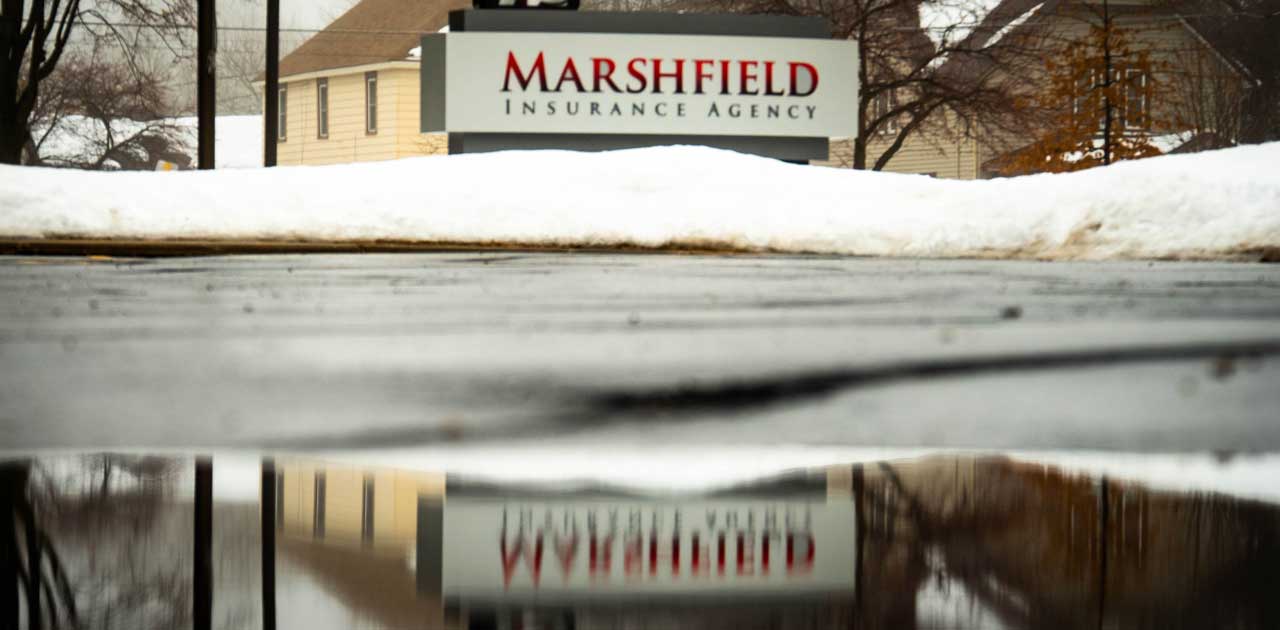Other than fire, there is nothing more destructive to your home than water damage. Yet too many homeowners make the mistake of assuming that their homeowner’s insurance covers flood damage. If you live in Wisconsin, spring thaw and other types of extreme weather can cause major flooding. Is your home protected?
What causes flooding?
Large amounts of moving water can occur any time there are extreme weather conditions.
FLOODS: Sometimes floods develop slowly and allow homeowners time to react. Overland flooding is the most common type of flood, and it occurs when rivers or streams overflow their banks. Another type of flood is caused after a heavy rain or sudden snowmelt, and the amount of water exceeds the size of underground drainage, sewer pipes, and street drains that are designed to carry water away from communities.
FLASH FLOODS: Named appropriately, flash floods can happen in minutes after a heavy rainfall, or a dam or levee break. This type of flood is especially dangerous not only because of the water speed and volume, but also because the water is filled with rocks and other debris.
Does homeowner’s insurance cover water damage?
Most standardized homeowner’s insurance policies do not cover flooding caused by extreme weather conditions such as spring thaw or generalized flooding that originates from outside your home. However, water damage due to a sewer backup, drain backup or sump pump failure can be covered under a home policy with the proper endorsements.
Homeowner’s insurance flood coverage –
Between 2007 and 2011, the average residential flood claim was almost $30,000. A few inches of water damage inside your home can add up quickly. Buying flood coverage could protect your family from severe financial loss.The cost for homeowner’s insurance, water damage repair and content replacement depends on how much insurance you purchase and what it covers. A homeowner’s policy with flood insurance usually covers all buildings and contents. However, content insurance is optional, and the amount you need should be discussed with your agent.If your home is located in a moderate-to-low-risk area, you might be eligible for preferred flood insurance rates if you include this product in your insurance portfolio along with other coverage such as auto insurance.
Homes located in flood zones:
Homes located in flood zones are considered high-risk but are still eligible for standard-rate flood insurance policies. All homes located in high-risk flood areas that have a mortgage through a federally regulated or insured lender must purchase a flood insurance policy. Flood insurance premiums are based on certain factors including:
- Age of building(s)
- Occupancy numbers
- Number of floors
- Location of contents
- Severity of flood risk (rated flood zone)
- The location of the first (lowest) floor to the elevation requirement on the flood zone map for your area (used for newer buildings)
- The preferred deductible amount compared with the amount of building and content coverage.**Note per National Flood Insurance Program (NFIP) / FEMA –
Flood is defined in the Standard Flood Insurance Policy (SFIP), in part, as:
A general and temporary condition of partial or complete inundation of TWO OR MORE ACRES OF NORMALLY DRY LAND AREA OR OF TWO OR MORE PROPERTIES (at least one of which is your property) from overflow of inland or tidal waters, from unusual and rapid accumulation or runoff of surface waters from any source, or from mudflow.
Most flood policies do have waiting periods, for example coverage would be in affect 30 days after issuance. Some exceptions apply.There are additional homeowner’s insurance coverage options offered by Marshfield Insurance Agency. Please contact your Independent Agent if you have any questions about your coverage. Your Independent Agent can also provide you with flood insurance quotes and coverage.

